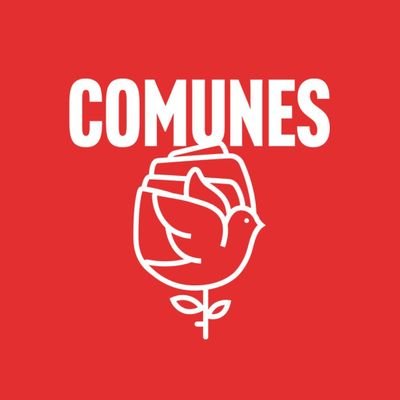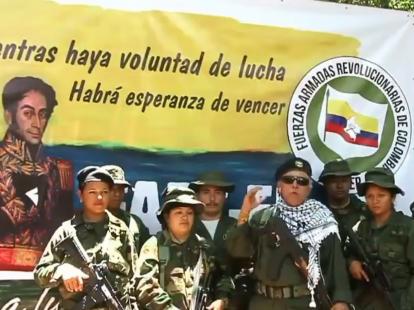The Colombian civil war is something we here at YPT have covered before, but I felt it might be interesting to look at just what’s happened as a result of the peace agreement a few years ago. In case you didn’t know, the FARC (Revolutionary Armed Forces of Colombia) had been fighting a war from 1964 all the way until a peace agreement in November of 2016 which was to allow them to disarm and form a political party to contest in Colombian elections instead. The FARC are (or were) a militant Marxist rebel group that at one point were one of the most professional and well-armed rebel forces in the world. So, what happened to FARC after the peace agreement?
Disarming and Reintegration

A period of transition followed the peace agreement, with FARC rebels gathering in designated zones to give up their weapons and be reintegrated into civilian life. By June of 2017, the FARC effectively ceased to exist as a militant group, with the locations of hundreds of hidden arms caches given over to the government. Altogether, over 8,000 guns, 22 tons of explosives and 3,000 grenades were handed over, effectively beheading the ability for the organization to take up arms again.
As a condition of the peace agreement, FARC agreed to the creation of the Special Jurisdiction for Peace, which was to be a special legal body to investigate heinous crimes committed over the course of the conflict and seek justice for victims. It ostensibly investigated crimes on all sides and would impartially decide whether or not the action is worthy of amnesty or if it should be treated as a crime. For instance, if a rebel were put on trial for a killing and it was found to be an ambush of a soldier, that would likely be forgiven as an act of warfare, while the murder of an innocent civilian would instead be punished with various sentences. The body was inherently quite controversial and heated debates across the political spectrum would follow many trials.
Shortly thereafter, the FARC formed a political party now known as ‘Commons’. Upon its initial founding, it was known as the Common Alternative Revolutionary Force, which allowed it to keep the FARC acronym. As a show of good faith, they were also awarded five seats each in the 108 member senate and 172 member house of representatives until at least 2026. Almost immediately, a designated member of the house was detained on drug trafficking charges and another member withdrew in protest against the government, replaced by another member instead. So… It was off to a rocky start.
On the 11th of March 2018, the Commons faced off in their first election and… Didn’t do all that great. For the House of Representatives, they got a grand total of 32,636 votes nationally, or 0.18% and gained zero new seats. As for the senate, they got 52,532 votes, or 0.36% and also no new seats. This was not exactly a great hope for their future political prospects, but due to the peace agreement, they maintained their ten existing seats.
FARC Dissidents

On the 7th of August 2018, a new right-wing president was elected in Colombia who partially ran on a platform of explicit opposition to FARC, announcing his desire to overturn large parts of the peace accords. He also cancelled then-ongoing negotiations with the ELN who are still at war with the government, threatening to re-enflame the war that Colombia had just barely gotten out of.
Even before this, there were many in Commons who felt that giving up the war was a bad idea. With an estimated 8-10,000 FARC members in 2013, the number of FARC dissident rebels in 2018 was estimated at around 2,000. This was certainly not an insignificant number and as the new right-wing president began tearing up the gains of the peace process, these numbers would only begin to swell. Most notably, former FARC commanders Iván Márquez and Jesús Santrich announced in August of 2019 that they were returning to war and re-establishing the FARC.
It would be one thing if it were just a hostile government, but violence had not actually stopped either. Right-wing paramilitary death squads had always been a third force in the civil war and by 2019, over 627 activists and social leaders had been murdered for their role in the peace process. Similarly, 150 former FARC fighters had been murdered while the government watched on with indifference, seemingly confirming the fears of many that handing over their arms was just putting them on a death list. This number was only to swell as the years went by.
Several months later, the 2019-2020 Colombian protests began, with one (among many) reason being the government’s willingness to allow the peace process to backslide into war. With other major factors like government corruption and rising poverty fueling the same support base as the FARC, this doubtlessly fueled even more defection to the FARC dissidents.
By 2021, the number of murdered former FARC members had risen to 253, with four being killed in the first two weeks of January alone. While the peace agreement still stands at time of writing and the president has been unable to reverse it, the conflict continues in the background. FARC dissidents allegedly have been allying with the similarly sized ELN, reconstructing a guerrilla force that could one day rise to the same level of FARC’s former power. This, however, would really take some doing. Long-established bases have been thoroughly overtaken by the military and the massive caches of arms that were handed over have crippled the military capability of the new rebels.
What’s for the Future?
With the way the Colombian peace process is being handled, it seems unlikely that true pace is anywhere near the horizon. Multiple rebel forces continue to fight, with thousands of guerrillas continuing on even while the main body of FARC struggles to contest elections in a highly hostile environment. The ELN have overtaken FARC as the main left-wing guerrilla group and FARC dissidents are gradually growing as well. As things spiral, FARC’s future as a political force is called into question and it always remains possible that they will simply throw up their hands and scrap the peace agreement… If the government doesn’t do it first.





